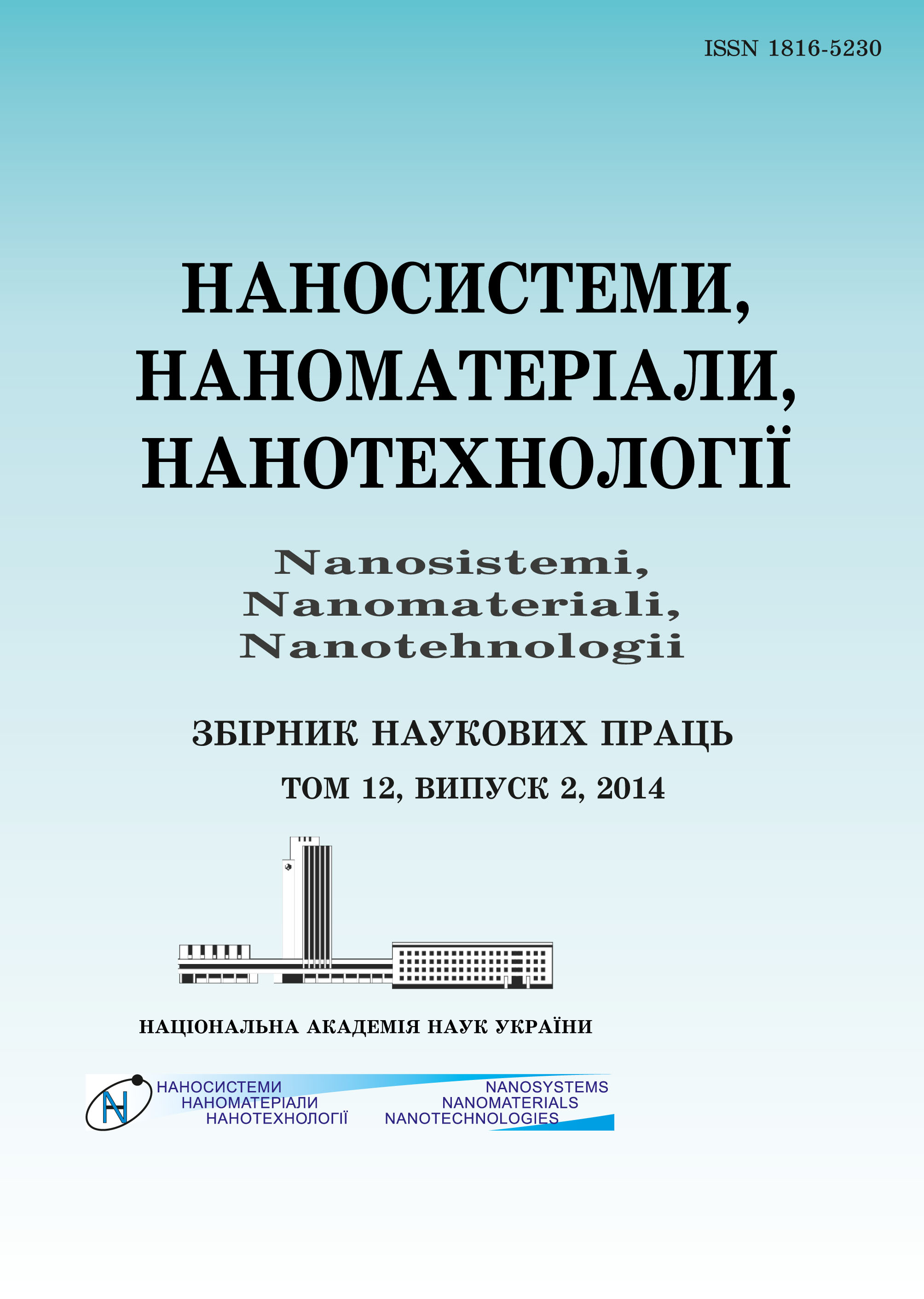|
|
|||||||||
 |
Year 2017, Volume 15, Issue 2 |
|
|||||||
|
|||||||||
Âûïóñêè/2017/òîì 15 /âûïóñê 2 |
O. V. Shcherbak, N. P. Galagan, P. A. Trotskyi, S. I. Kovtun
«Application of Silicon Dioxide Nanoparticles in the in vitro Technology for the Swine Embryos’ Formation»
381–388 (2017)
PACS numbers: 81.16.Fg, 82.39.Rt, 83.80.Lz, 87.17.Uv, 87.18.-h, 87.85.jf, 87.85.Rs
Ultrafine silica (UFS) is widely used in medicine production in a form of additives as, at certain concentration, it is physiologically harmless and compatible with biological system. It is developed the covered with hydroxyl groups’ surface, which has high adsorption properties towards many substances. Substitution of hydroxyls with synthetic and natural compounds allows creating, on its base, immobilized biologically active nanomaterials with prolonged and adsorptive effect. Fixing at UFC surface some carbohydrates or protein enable to have nanomaterials, which, at adding to standard cryomedia, facilitate better survival rate of melted bulls’ spermatozoas. Given below experimental-study results on interaction of reproductive cells with UFS nanoparticles are the extensions of mentioned investigation, which concerns not only gametes’ cryoconservation technology, but also in vitro swine embryos getting as well. As stated, the level of in vitro swine embryo forming reaches 37.5% (27 out of 72 inseminated eggs) because of 0.001% UFS addition to embryo cultivating medium. Total time of melted ejaculated boars’ spermatozoa survival after 0.001% UFS addition is prolonged till 5.5 hours. In vitro biologic activity of swine embryos with 0.001% UFS concentration is tested. The perspective of the UFC uses to improve gametes’ and in vitro embryos’ cultivating media is shown.
Key words: nanoparticles of silica (ultrafine silica), preservation of the gene pool of pigs, ejaculated boars’ spermatozoa, in vitro swine embryo, cryopreservation, cryomedia.
https://doi.org/10.15407/nnn.15.02.0381
REFERENCES
1. A. M. Belous, V. I. Grishhenko, and Yu. S. Parashchuk, Kriokonservatsiya Reproduktyvnykh Klitok [Cryopreservation of Reproductive Cages] (Kyiv: Naukova Dumka: 1986) (in Ukrainian).
2. V. P. Burkat and S. I. Kovtun, Biotekhnologiya, 1, No. 3: 7 (2008) (in Ukrainian).
3. V. E. Nedava, A. A. Chuiko, L. A. Begma, A. A. Begma, and V. I. Bogomaz, Zootekhnologiya, 8: 63 (1990) (in Russian).
4. M. T. Alyushin and M. N. Astakhova, Farmatsija, 6: 73 (1971) (in Russian).
5. A. A. Chuiko, V. K. Pogorelyi, A. A. Pentyuk, M. A. Andreychin, and L. A. Belyakova, Meditsinskaya Khimiya i Klinicheskoe Primenenie Dioksida Kremniya [Medical Chemistry and Clinical Application of Silicon Dioxide] (Ed. A. A. Chuiko) (Kyiv: Naukova Dumka: 2003) (in Ukrainian).
6. N. P. Galagan, Materialy II Vseross. Nauch. Konf. 'Sorbenty kak Faktor Kachestva Zhizni i Zdorov'ya' (Moscow-Belgorod: 2006), p. 55 (in Russian).
7. A. D. Kurbatov, E. M. Platov, N. V. Korban, L. G. Moroz, and V. A. Nauk, Kriokonservatsiya Spermy Sel'skokhozyaistvennykh Zhivotnykh [Cryopreservation of Sperm of Farm Animals] (Leningrad: Agropromizdat. Leningr. otd-nie: 1988) (in Russian).
8. J. J. Parrish, J. L. Susko-Parrish, R. R. Handrow, M. M. Sims, and N. L. First, Biol. Reprod., 40: 1020 (1989).
https://doi.org/10.1095/biolreprod40.5.1020
|
©2003—2021 NANOSISTEMI, NANOMATERIALI, NANOTEHNOLOGII G. V. Kurdyumov Institute for Metal Physics of the National Academy of Sciences of Ukraine.
E-mail: tatar@imp.kiev.ua Phones and address of the editorial office About the collection User agreement |